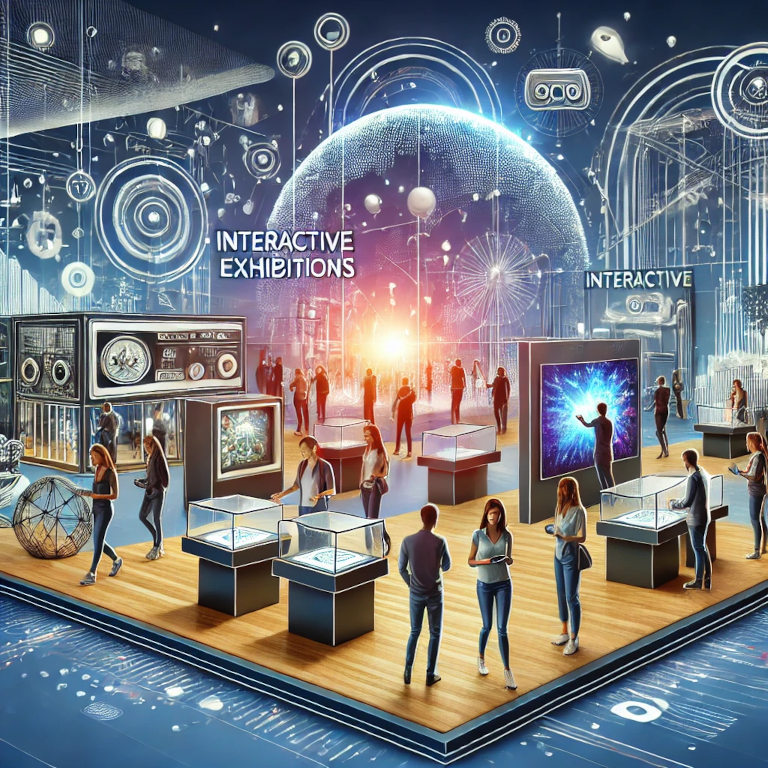Interactive exhibitions are transforming the landscape of Entertainment, offering visitors immersive and engaging experiences that go beyond traditional displays. As an expert in Entertainment, I will explore the significance, benefits, and various forms of interactive exhibitions, providing insights into how they captivate audiences and enhance educational and entertainment value.
Understanding Interactive Exhibitions
Interactive exhibitions are designed to engage visitors through hands-on, participatory experiences. Unlike static displays, these exhibitions encourage visitors to interact with the exhibits, often using technology to create dynamic and immersive environments. They are prevalent in museums, science centers, art galleries, and themed attractions.
Benefits of Interactive Exhibitions
1. Enhanced Engagement: Interactive exhibitions capture visitors’ attention and encourage active participation. This leads to a deeper connection with the content and a more memorable experience.
2. Educational Value: By involving visitors in the learning process, interactive exhibitions can effectively convey complex concepts and information. Hands-on activities and digital interfaces make learning enjoyable and accessible.
3. Personalization: Many interactive exhibitions allow visitors to personalize their experience. This customization can enhance the relevance and impact of the exhibition, making it more meaningful for each individual.
4. Accessibility: Interactive exhibits can cater to diverse audiences, including children, adults, and individuals with disabilities. Features like touchscreens, audio guides, and tactile elements ensure inclusivity.
5. Innovation and Technology: These exhibitions often incorporate the latest technology, such as virtual reality (VR), augmented reality (AR), and artificial intelligence (AI), creating cutting-edge experiences that push the boundaries of traditional displays.
Types of Interactive Exhibitions
1. Science and Technology Exhibits: These exhibitions often feature hands-on experiments, interactive models, and digital displays that explain scientific principles and technological advancements. Visitors can explore topics like space, physics, and robotics in an engaging way.
2. Art Installations: Interactive art exhibitions invite visitors to become part of the artwork. This can include digital art that responds to touch, sound, or movement, as well as immersive installations that transform spaces into experiential environments.
3. Historical and Cultural Exhibits: These exhibitions use interactive elements to bring history and culture to life. This can include virtual tours of historical sites, interactive maps, and reenactments that allow visitors to experience historical events firsthand.
4. Themed Attractions: Interactive elements in themed attractions, such as theme parks and zoos, enhance the entertainment value. Examples include interactive rides, animal encounters, and educational games that provide fun and learning simultaneously.
5. Virtual Exhibitions: With advancements in technology, virtual exhibitions have become increasingly popular. These online platforms offer interactive tours, 3D models, and multimedia content, allowing visitors to explore exhibits from anywhere in the world.
Key Features of Interactive Exhibitions
1. Touchscreens and Tablets: Interactive displays often use touchscreens and tablets to provide information, games, and quizzes. These devices allow visitors to explore content at their own pace and interest level.
2. VR and AR Experiences: Virtual and augmented reality create immersive environments that transport visitors to different worlds. VR headsets and AR apps enhance the sensory experience, making the exhibition more engaging and realistic.
3. Sensor-Based Interactions: Motion sensors, touch sensors, and pressure sensors enable exhibits to respond to visitors’ actions. This can include interactive floors, walls, and objects that react to movement and touch.
4. Gamification: Incorporating game elements into exhibitions can make learning fun and competitive. Points, badges, and leaderboards motivate visitors to engage more deeply with the content.
5. Multimedia Elements: Videos, animations, and sound effects enhance the storytelling aspect of exhibitions. Multimedia elements can provide context, explain complex ideas, and create an emotional connection with visitors.
How to Make the Most of Interactive Exhibitions
1. Plan Your Visit: Research the exhibition in advance to understand what interactive elements are available. This will help you prioritize and make the most of your time.
2. Engage Fully: Don’t just passively observe; actively participate in the interactive elements. Touch, explore, and experiment to get the full experience.
3. Take Your Time: Interactive exhibitions are designed for exploration. Take your time with each exhibit to fully appreciate and understand the content.
4. Use Available Resources: Many interactive exhibitions offer additional resources such as apps, guides, and workshops. Utilize these to enhance your experience.
5. Provide Feedback: Interactive exhibitions often rely on visitor feedback to improve. Share your thoughts and suggestions to help create even better experiences in the future.
Interactive exhibitions represent the future of Entertainment, blending technology, creativity, and education to create engaging and memorable experiences. By actively involving visitors in the exhibition, these interactive displays offer a deeper connection to the content and a more enjoyable learning experience. From science and technology to art and culture, interactive exhibitions are revolutionizing the way we explore and understand the world around us. Embrace the opportunities these exhibitions provide and immerse yourself in the dynamic world of interactive entertainment.






